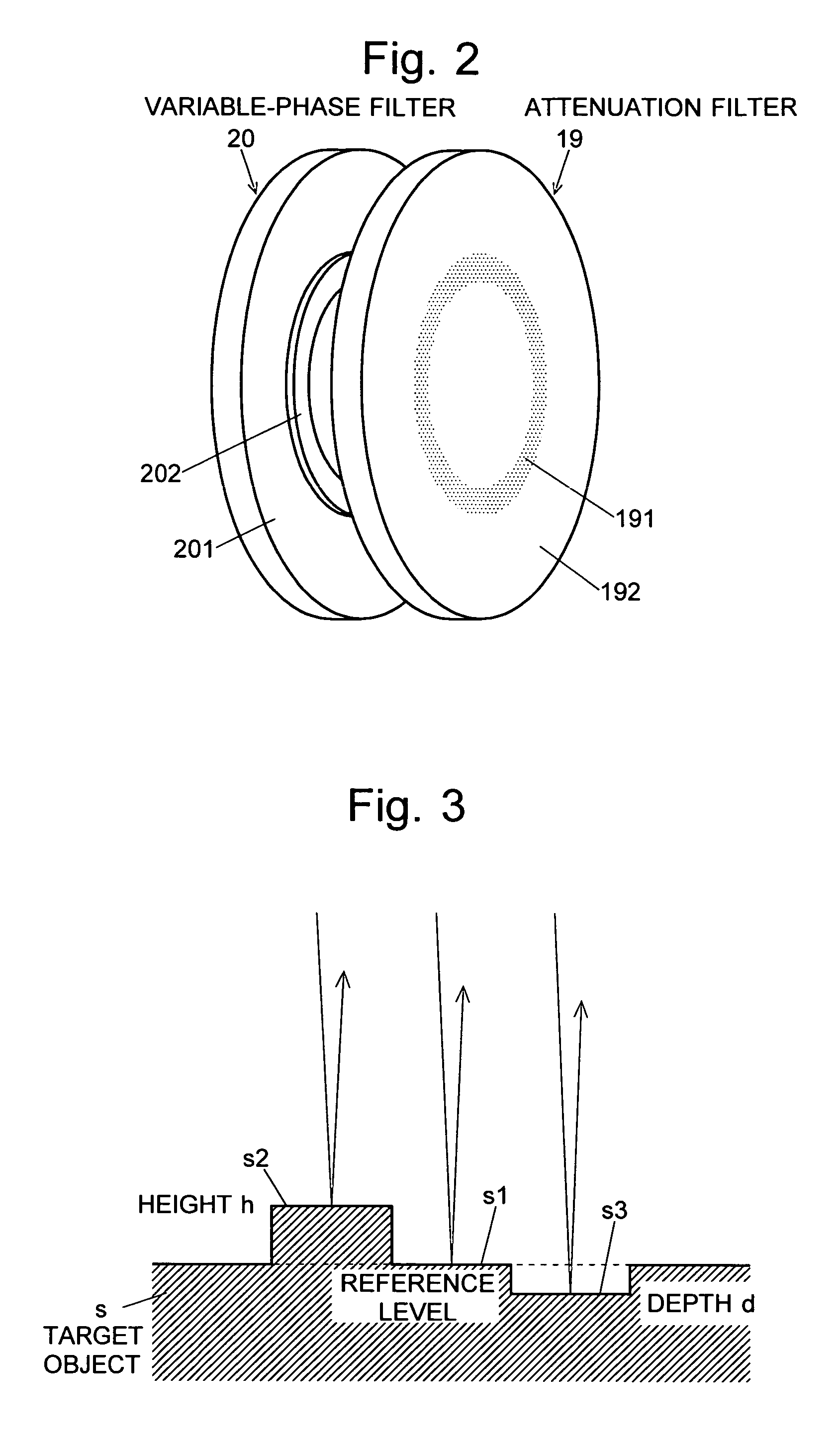Three-dimensional geometric measurement and analysis system
a three-dimensional geometric and analysis system technology, applied in the direction of measurement devices, color/spectral property measurements, instruments, etc., can solve the problems of inability to discriminate a projection from a recess, mechanical scanning is too slow to quickly perform a measurement, and the scanning range is small, so as to achieve effective removal of impurities, reduce the effect of consuming a considerable length of tim
- Summary
- Abstract
- Description
- Claims
- Application Information
AI Technical Summary
Benefits of technology
Problems solved by technology
Method used
Image
Examples
Embodiment Construction
[0062]FIG. 1 shows the general construction of an embodiment of the three-dimensional geometric measurement system according to the present invention. The light emitted from the white light source 11 passes through the ring-shaped illumination slit 12 to form a ring of illumination light, called the “annular illumination light.” The annular illumination light passes through the lens 13 and is reflected by the half mirror 14 to the downward direction in the drawing. The reflected light is converged by the lens 15 onto the target object (phase object) s.
[0063] When the light cast onto the target object s is reflected by its surface, the phase of the light changes according to the geometry of the object s (i.e. the height of the object in the light-casting direction). With the phase thus changed, the reflected light passes through the lens 15 again, and then through the half mirror 14, to reach the half mirror 18 located above. The half mirror 18 splits the reflected light into two op...
PUM
| Property | Measurement | Unit |
|---|---|---|
| width | aaaaa | aaaaa |
| strength | aaaaa | aaaaa |
| optical probe | aaaaa | aaaaa |
Abstract
Description
Claims
Application Information
 Login to View More
Login to View More - R&D
- Intellectual Property
- Life Sciences
- Materials
- Tech Scout
- Unparalleled Data Quality
- Higher Quality Content
- 60% Fewer Hallucinations
Browse by: Latest US Patents, China's latest patents, Technical Efficacy Thesaurus, Application Domain, Technology Topic, Popular Technical Reports.
© 2025 PatSnap. All rights reserved.Legal|Privacy policy|Modern Slavery Act Transparency Statement|Sitemap|About US| Contact US: help@patsnap.com



